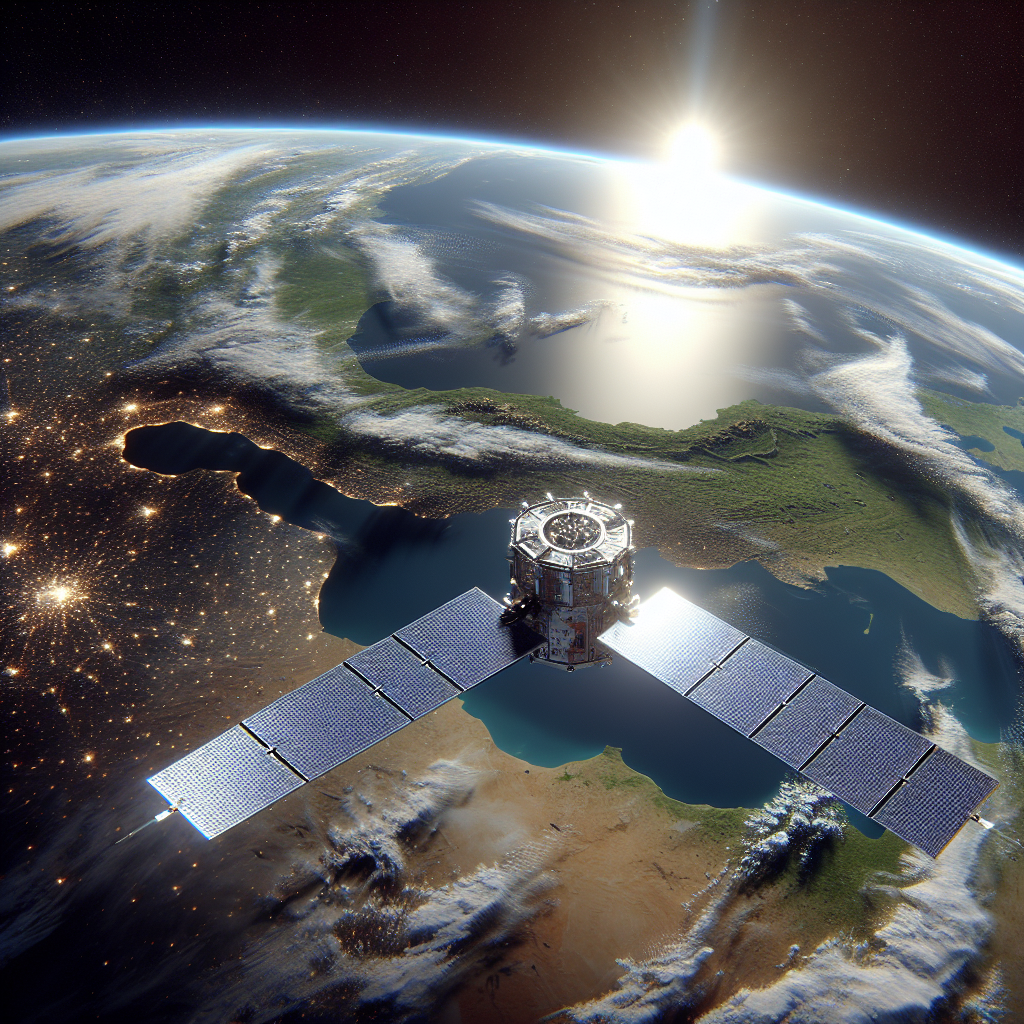In the realm of internet connectivity, a new player has emerged. Starlink, a satellite internet service by SpaceX, promises to revolutionize the way we access the web.
But how does Starlink's internet speed compare to traditional internet service providers? Is it a viable alternative, especially for those in remote or rural areas where broadband services are limited?
This article aims to answer these questions. We will delve into the specifics of Starlink's technology, its performance in speed tests, and its potential to disrupt the traditional broadband market.
Whether you're considering switching to Starlink, or simply curious about the latest advancements in satellite internet technology, this comprehensive comparison will provide valuable insights.
Join us as we explore the world of Starlink and its mission to provide high-speed internet globally. Let's see how it measures up against traditional internet services.
Understanding Starlink Internet
Starlink is a project by SpaceX, the aerospace company founded by Elon Musk. It aims to provide high-speed internet access across the globe using a network of satellites.
Unlike traditional internet service providers that rely on underground cables, Starlink uses thousands of small, low Earth orbit (LEO) satellites. These satellites form a constellation around the Earth, enabling internet coverage even in the most remote corners of the world.
The idea is ambitious, but it's not without its challenges. Weather conditions, satellite management, and regulatory hurdles are just a few of the obstacles Starlink must navigate.
Yet, despite these challenges, Starlink has already made significant strides in its mission. Let's delve deeper into how this innovative technology works.
How Does Starlink Work?
Starlink's network of satellites operates in low Earth orbit. This is a key factor in its ability to provide high-speed internet.
Traditional satellite internet services use geostationary satellites. These are located much further from Earth, resulting in higher latency. In contrast, Starlink's LEO satellites are closer to the ground, reducing latency and improving speed.
The satellites communicate with ground stations on Earth. These stations are connected to the local internet infrastructure. When you send a request (like clicking a link on a webpage), the signal travels from your Starlink dish, to the satellites, to the ground station, and then onto the internet.
This round-trip is repeated when the requested data is sent back to you. Despite the journey, Starlink aims to do this quickly enough to provide high-speed internet comparable to traditional broadband.
The Mission of Starlink: Global High-Speed Internet
Starlink's mission is to provide reliable, high-speed internet to anyone, anywhere on Earth. This is a significant undertaking, especially considering the current digital divide.
Many rural and remote areas lack access to reliable, high-speed internet. Traditional ISPs often find it unprofitable to lay cables in these areas due to the low population density.
Starlink, with its satellite technology, has the potential to bridge this gap. By providing global coverage, it could bring high-speed internet to those who have been left behind by traditional broadband.
Starlink vs. Traditional Internet Speeds
When it comes to internet speed, Starlink shows promise. Early users have reported download speeds ranging from 50 Mbps to 150 Mbps. This is comparable to many traditional broadband services.
However, it's important to note that Starlink is still in its beta phase. This means that the service is not yet fully optimized. Users may experience periods of no connectivity or slower speeds as the system is fine-tuned.
Here are some key points to consider when comparing Starlink to traditional internet speeds:
- Starlink's speed can vary based on location, weather, and other factors.
- Traditional broadband speeds also vary based on location, especially in rural areas.
- Starlink's speed is expected to improve as more satellites are launched and the network is optimized.
Average Speeds and User Experiences
User experiences with Starlink have been mixed. Some users report speeds exceeding 100 Mbps, while others experience slower speeds or intermittent connectivity.
This variability is to be expected during the beta phase. As the network matures and more satellites are launched, speeds and reliability should improve.
It's also worth noting that Starlink's speed can be affected by the placement of the user's satellite dish. An unobstructed view of the sky is crucial for optimal performance.
The Impact of Weather and Obstructions
Weather conditions can impact Starlink's internet speed. Heavy rain or snow can interfere with the signal between the satellite and the user's dish.
Similarly, physical obstructions like buildings or trees can also affect the signal. This is why it's important to install the Starlink dish in a location with a clear view of the sky.
Despite these challenges, Starlink is working on solutions to mitigate the impact of weather and obstructions on its service.
Latency: Satellite vs. Cable vs. Fiber
Latency is the time it takes for data to travel from one point to another. It's a crucial factor in activities like online gaming and video conferencing, where a delay can be noticeable.
Traditional satellite internet services have high latency due to the distance between the geostationary satellites and the Earth. However, Starlink's LEO satellites are much closer, resulting in lower latency.
While Starlink's latency is higher than that of cable or fiber internet, it's significantly lower than traditional satellite internet. As the network continues to evolve, Starlink's latency is expected to decrease further, making it a viable alternative to traditional broadband for many users.
Performing a Starlink Internet Speed Test
Testing your Starlink internet speed is a straightforward process. It's similar to testing the speed of any other internet service.
You can use any online speed test tool. These tools measure your download and upload speeds, as well as your ping or latency.
Step-by-Step Guide to Testing Your Starlink Speed
To test your Starlink internet speed, follow these steps:
Connect your device to your Starlink internet service. Make sure no other devices are using the internet during the test.
Open a web browser and navigate to an online speed test tool. Examples include Speedtest.net, Fast.com, or Google's speed test.
Click the "Go" or "Start" button to begin the test. The tool will measure your download speed, upload speed, and latency.
Once the test is complete, you'll see your results displayed on the screen. You can compare these results to the speeds advertised by Starlink.
Repeat the test at different times of the day to get a more accurate picture of your average speed.
Remember, many factors can affect your internet speed. These include the time of day, weather conditions, and the placement of your Starlink dish.
Pricing and Value Comparison
When considering Starlink, it's important to compare its cost to traditional internet service providers (ISPs). The value of an internet service is not just about speed. It also includes factors like reliability, coverage, and customer service.
Starlink's pricing model is simple. There's a flat monthly fee for the service. This fee is the same no matter where you are in the world.
However, the cost of Starlink may be higher than some traditional ISPs. This is especially true in urban areas where there's a lot of competition. But in rural or remote areas, Starlink may be the only high-speed option.
Starlink's Cost vs. Traditional ISPs
Starlink's monthly fee is currently set at $99. This includes unlimited data usage. Traditional ISPs often have a range of plans with varying speeds and data limits.
In some cases, you can find cheaper plans from traditional ISPs. But these often come with slower speeds or data caps. For high-speed, unlimited plans, the cost is often similar to Starlink's.
However, it's important to consider the value you're getting. Starlink offers high-speed internet in places where it was previously unavailable. This can be a game-changer for many users.
Equipment and Setup Costs
In addition to the monthly fee, there are also upfront costs for Starlink. You'll need to purchase the Starlink Kit. This includes the satellite dish, a modem, and a router.
The cost of the Starlink Kit is currently $499. This is a one-time cost. It's higher than the typical cost of a modem and router from a traditional ISP.
However, the Starlink Kit includes a state-of-the-art satellite dish. This is what allows you to connect to the Starlink satellites. The cost of this technology is part of what you're paying for.
The Future of Internet Connectivity
The internet is a vital part of our lives. It's how we work, learn, and stay connected. But not everyone has access to reliable, high-speed internet. This is where Starlink comes in.
Starlink's mission is to provide high-speed internet to the entire globe. This is a game-changer for remote and rural areas. It could also be a viable option for urban users looking for an alternative to traditional ISPs.
The future of internet connectivity is not just about speed. It's also about accessibility. Starlink is working to make high-speed internet accessible to everyone, everywhere.
Expansion Plans and Technological Advancements
Starlink is still in its early stages. But it's already making a big impact. The company has plans to continue expanding its network of satellites. This will increase coverage and improve speeds.
Starlink is also constantly working on technological advancements. This includes improving the satellite technology and the ground equipment. These advancements will help to improve the service and make it more reliable.
The future of Starlink is exciting. With continued expansion and technological advancements, it's set to revolutionize internet connectivity.
The Role of Starlink in Remote and Rural Internet Access
One of the biggest benefits of Starlink is its potential to provide high-speed internet in remote and rural areas. These are areas where traditional ISPs often can't provide service. Or if they can, the speeds are usually very slow.
Starlink can provide high-speed internet to these areas. This can have a huge impact on the lives of people living in these areas. It can provide access to online education, telemedicine, and remote work opportunities.
Starlink is not just about providing high-speed internet. It's about providing access to opportunities. It's about bridging the digital divide.
Is Starlink the Right Choice for You?
Choosing an internet service provider is a personal decision. It depends on your specific needs and circumstances. Starlink offers a unique solution, especially for those in remote or underserved areas.
If you're looking for high-speed internet and traditional ISPs have let you down, Starlink could be a viable option. It's also a great choice if you live in a rural area where high-speed internet is not currently available.
Starlink is an innovative solution that's changing the face of internet connectivity. It's worth considering if you're looking for a new internet service provider.















.jpg)
.jpg)


0 Comments